Ledgewood Creek, 2005 Sauvignon Blanc, Estate Grown, Suisun Valley Appellation - ONE CASE
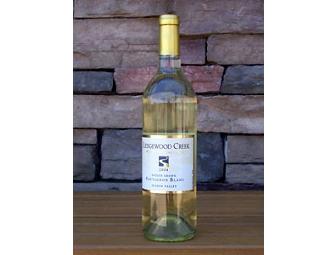
Item Number: 2132
Time Left: CLOSED
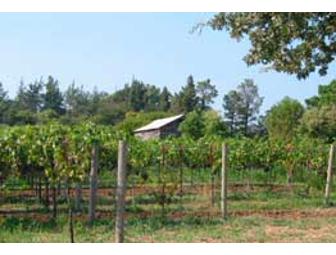
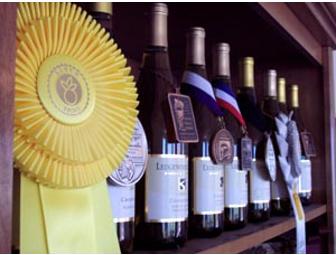
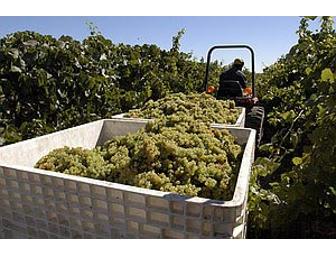
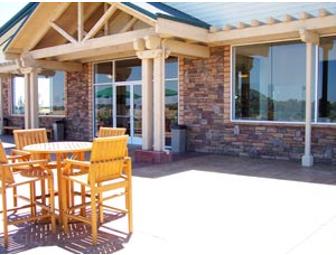
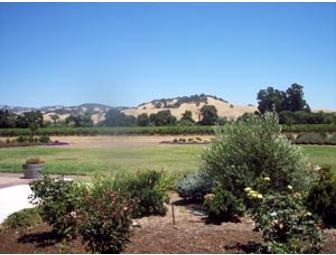
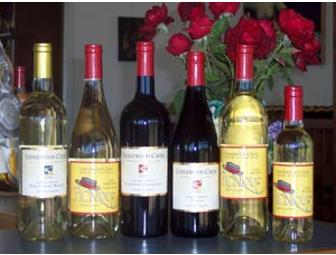
Description
Ledgewood Creek 2005 Sauvignon Blanc, Estate Grown, Suisun Valley Appellation. Gold Medal Winner, 2006 LA Wines of the World Competition. ONE CASE.
| ||
| Winemaker Comments Exclusively produced from our estate grown fruit, our 2005 Sauvignon Blanc is fragrant with orange blossom and delicate lemon grass flavors. It is bright, fresh and vibrant, picking up green apple and tart citrus on its leading edge and then filling the mouth with honey-like flavors that make for a nice, lingering finish. Finely balanced, this wine is an ideal accompaniment to shellfish, lemon chicken, Thai dishes and other Asian cuisine. Hailed as an exceptionally fine vintage in Northern California, the 2005 growing season was hallmarked with an ideal long, warm harvest period which allowed wine grapes to reach full maturity and develop full varietal character. Warm temperatures in February and March pushed the vines toward an early bud break. These warm months were followed by cool, rainy conditions which lasted through mid-June. This pattern was followed by an unusually cool summer with one spike of hot weather in August which accelerated grape maturity and flavor development. Ideal conditions in the Suisun Valley contributed to a huge crop for most varieties and fruit of outstanding quality. |
Special Instructions
- You must be 21 years of age to bid on this item.
- The winner may pick up the case of 2005 Ledgewood Creek Sauvignon Blanc, Estate Bottled, Suisun Valley Appellation, at the Solano Community College Foundation Office, 4000 Suisun Valley Road, Suisn Valley, CA 94534. Call 707-864-7177 for appointment.
Ledgewood Creek Winery
4589 Abernathy Road
Suisun Valley, CA 94534
(707) 426-4424
Winery and Tasting Room HoursWe are now open daily from 10 AM - 5 PM
(or by appointment)
Wine Spectator - Sauvignon Blanc's Fresh Appeal
August 31, 2006 -- California Sauvignon Blanc is shedding its underdog status. A recent upsurge in quality, along with changing styles across the state, has shown the varietal can be a flavorful alternative to Chardonnay, the acknowledged leader among California whites. As a reasonably priced, refreshing quaff that matches well with a variety of cuisines, Sauvignon Blanc is perfectly suited for summer sipping.
Although Sauvignon Blanc is made in a range of styles, the wines share a common thread of crisp, mouthwatering acidity. They are light- to medium-bodied and feature flavors that run the gamut from citrus (lemon, lime and grapefruit) to tropical and exotic (pineapple, melon, gooseberry, passion fruit and mango) to herbal (grass, bell and jalapeño pepper). Some versions also exhibit nuances of flint, mineral and smoke, or take on fleshy nectarine and peach notes. California's versions generally fall into two camps: the simple and quaffable or the more serious and ambitious.
Since our last report ("A Rising Tide," Aug. 31, 2005), more than 150 California Sauvignon Blancs have been blind-tasted in our Napa office. Most are from the 2004 vintage, with a few 2005s trickling in. 2004 is the third noteworthy vintage in a row for California Sauvignon Blanc. It's still a bit early to tell, but it appears that 2005 is also a solid vintage, if less exciting overall. (For ratings of all wines tasted for this report, see the alphabetical listing starting on page 278 of this issue's Buying Guide.)
Even though this year's report contains only a handful of outstanding wines (90 points or higher on the Wine Spectator 100-points scale), nearly half of the wines tasted scored 85 to 89 points, or very good. Moreover, the average price for all the Sauvignon Blancs reviewed is around $18, so if you find a bottling you like, you might consider buying a case.
The six Sauvignon Blancs that rated outstanding in the past year demonstrate the diversity of the grape and its adaptability to different regions. Napa Valley is usually the leading source of the best Sauvignon Blancs, and this year is no exception. The Araujo Napa Valley Eisele Vineyard 2004 (93 points, $38) is this report's top scorer, a stylish wine with honeysuckle and fig notes. (The 2005 was bottled too late for inclusion here.)
The Ledgewood Creek Suisun Valley 2004 (91, $10) showcases Suisun Valley, an area just east of Napa in Solano County long unknown to wine lovers, though growers there have been supplying grapes to Napa and Sonoma winemakers for decades. The region, which is only now appearing on wine labels, is an appellation you should keep an eye on.
One newcomer that caught our attention is the John Anthony Carneros Church Vineyard 2005 (90, $19). John Anthony Truchard, of the famed Truchard grapegrowers and winemakers of Carneros, and his wife, Michele, debuted their own label this year with three outstanding wines, including this rich and fleshy version with hints of white truffle, smoke and Meyer lemon.
Rounding out the top six are one example from the Central Coast and two from Sonoma. The Babcock Santa Rita Hills 2004 (90, $23), full of spice, passion fruit and lemon-lime notes, has a complexity that winemaker Bryan Babcock achieved by blending grapes from multiple vineyards, while the Peter Michael Sonoma County L'Après-Midi 2004 (90, $42), one of the most expensive wines in this report, is a beautiful example of a Sauvignon Blanc with just the right touch of oak. (The wine is 100 percent barrel-fermented and aged in barrel for nine months.) The Schug Sonoma County (90, $15), on the other hand, is an exceptional value, complex and refreshing with a lovely herbal profile.
As usual, Sauvignon Blanc is one of our top value varietals. For less than $15—and sometimes less than $10—you can find tangy and tasty wines such as the Beringer Napa Valley 2004 (88, $12), the Rock Rabbit Central Coast 2005 (86, $10) and the Smoking Loon California 2004 (86, $9).
Sauvignon Blancs from California typically don't age well, and should be consumed within a few years of the vintage date. Think of the wine, when paired with a range of dishes, as akin to a brightening squirt of lemon; it's a natural with oysters and pairs well with nearly all fish and white meat. It also stands up to tangy sauces, spicy foods and sushi, and goes well with many vegetable dishes, from gazpacho to asparagus to artichokes. And don't forget the classic pairing of Sauvignon Blanc and goat cheese.
The evolution of Sauvignon Blanc in California has involved plenty of twists and turns. Forty years ago, Robert Mondavi decided that the wine's image needed to be updated. He coined the term Fumé Blanc to invoke the spirit of Pouilly-Fumé in France's Loire Valley, one of Sauvignon Blanc's spiritual homes. Mondavi also believed in barrel fermenting Sauvignon Blanc, which can add body and smoky nuances.
For years, Sauvignon Blanc was treated as a second-class wine compared with Chardonnay. Many producers used too much oak in their bottlings, which masked the varietal fruit flavors and made for dull-tasting wines. A shift occurred in the mid-1980s, when New Zealand Sauvignon Blancs hit the wine scene in the United States and proved that winemakers could attract consumers to the variety by embracing its racy, herbal, fruity side.
California producers responded in kind. They too have been exploring Sauvignon Blanc's racy and pungent aromas, while a string of good vintages from 2002 to 2004 have helped elevate California Sauvignon Blanc among wine lovers. That's the good news.
The not-so-good news is that early returns on the 2005s don't look as promising. The 2005 vintage was marked by large yields and lower alcohol levels, so you'll have to pick carefully among the '05 Sauvignon Blancs in order to avoid simple wines with dilute flavors.
Napa Valley-based tasting coordinator MaryAnn Bovio has been with Wine Spectator since 1997.